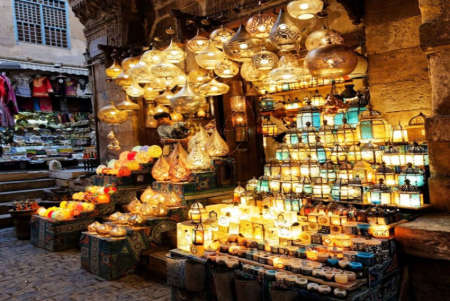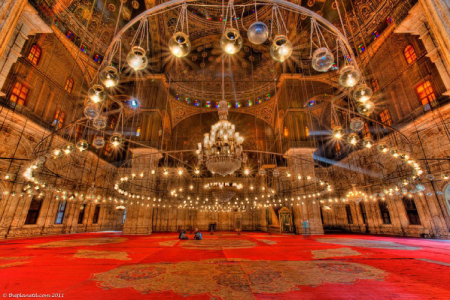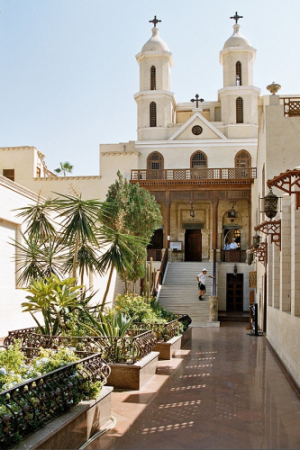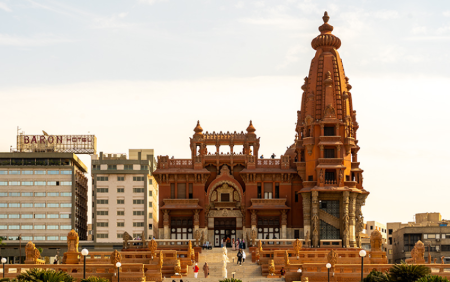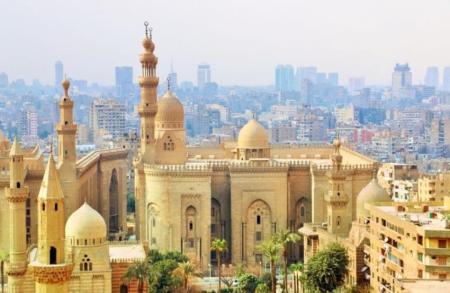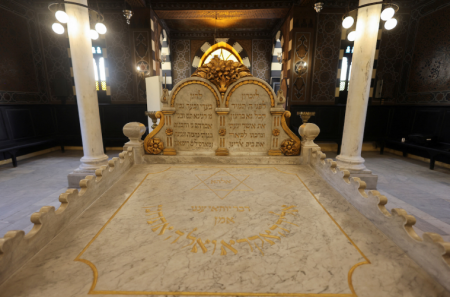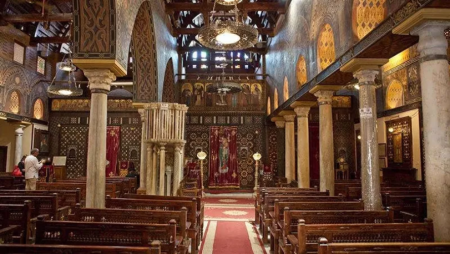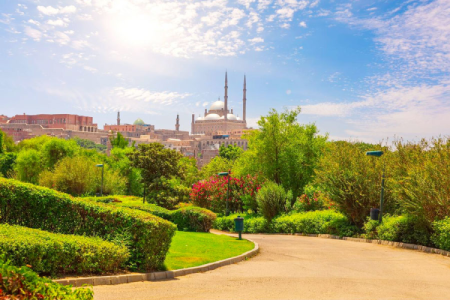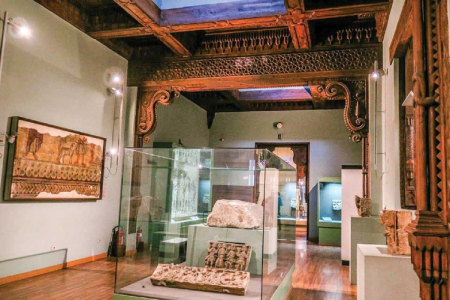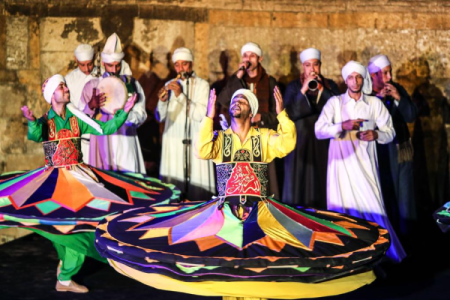Coptic Cairo( old cairo)
.png)
Coptic Cairo (Old Cairo): The Spiritual Heart of Egypt’s Timeless Heritage
Deep in the historic core of Cairo city, where the whispers of ancient civilizations echo through narrow cobblestone streets, lies Coptic Cairo—often called Old Cairo. This sacred enclave is more than a neighborhood; it’s a living museum of faith, history, and cultural endurance. Coptic Cairo, with its labyrinth of churches, synagogues, and monasteries, stands as a testament to Egypt’s layered identity. It’s here that Christianity found one of its earliest and most resilient homes, a place where time seems to pause, allowing travelers to step back into the origins of faith and civilization.
The allure of Coptic Cairo isn’t merely in its architectural marvels or religious relics but in the palpable spirituality that saturates every brick and stone. From the serene courtyards of the Hanging Church to the solemn chambers of Abu Serga Church, this area carries the legacy of devotion and survival. It’s said that the Holy Family rested here during their flight into Egypt—a story that still draws pilgrims from around the world. Yet, beyond the sacred tales, Old Cairo is a microcosm of Egypt’s broader narrative: a crossroads where cultures, religions, and empires have intertwined for millennia.
Exploring Coptic Cairo opens a window into the soul of Egypt—a country that harmoniously blends ancient mysticism with living faith. Its historic streets invite curiosity and reflection, making it an essential stop for any traveler seeking to grasp Egypt’s spiritual depth. Whether you come for the art, the archaeology, or the aura of tranquility, Coptic Cairo offers a journey that transcends time itself.
The Historical Significance of Coptic Cairo in Egyptian Civilization
Coptic Cairo’s history stretches back to the first centuries of Christianity, long before the rise of Islam in Egypt. Built on the site of what was once Babylon-in-Egypt, the Roman fortress that guarded the river crossing, Coptic Cairo became a sanctuary for early Christians fleeing persecution. Even today, remnants of the old Roman walls still guard the area near the Babylon Fortress Cairo, reminding visitors of the city’s ancient military might.
During the Byzantine era, this district flourished as the heart of Christian Egypt. The churches that rose during this period became architectural masterpieces—built with intricate carvings, icons, and marble pulpit designs that reveal deep spiritual symbolism. When the Islamic Caliphate emerged, rather than erase this Christian heritage, successive rulers often protected it, giving rise to a unique cultural coexistence that still defines Cairo today.
For historians, Coptic Cairo offers a tangible timeline of religious evolution—from Pharaonic spirituality through Greco-Roman influence to Christian devotion and Islamic preservation. Each stone tells a story, making the district a living chronicle of human faith and resilience.
The Hanging Church: A Jewel of Coptic Architecture
No journey through Coptic Cairo is complete without stepping inside the iconic the Hanging Church, or El Muallaqa. Suspended above the southern gate of the Babylon Fortress, this 3rd-century marvel gets its name from its elevated position. Its wooden ceiling, shaped like Noah’s Ark, evokes salvation and faith in divine deliverance. Inside, polished icons depict Christ, the Virgin Mary, and an array of saints, each rendered in the rich Coptic tradition of sacred art.
The Hanging Church isn’t just a place of worship—it’s a living archive of Egypt’s Christian artistry. The church’s marble pulpit, intricate carvings, and centuries-old relics make it a beacon for historians, pilgrims, and art lovers alike. It remains the seat of the Coptic Orthodox Pope, underscoring its enduring importance as both a religious and cultural center.
Abu Serga Church and the Holy Family’s Refuge
The Abu Serga Church—also known as the Church of Saints Sergius and Bacchus—holds a sacred story revered across Egypt. Beneath its ancient nave lies a crypt believed to have sheltered the Holy Family during their flight into Egypt. This modest chamber, filled with spiritual gravity, transforms every visitor’s experience into a moment of profound reflection. The church’s basilica design, dating back to the 5th century, showcases Corinthian columns and wooden icons that narrate episodes from both the Old and New Testaments.
For Christian pilgrims, Abu Serga isn’t just a historical site—it’s a living link to the Gospel narrative. And for cultural travelers, it’s a reminder of Egypt’s role as a refuge and a cradle of faith.
The Ben Ezra Synagogue: A Testament to Egypt’s Jewish Heritage
Tucked amidst Coptic Cairo’s churches lies the Ben Ezra Synagogue, one of the oldest Jewish temples in Egypt. Originally a Coptic church, it was converted into a synagogue in the 9th century and later became a center of Jewish learning. Legend says that the infant Moses was found on this very spot, linking it to the earliest Biblical tales of Egypt. Inside, the majestic wooden architecture and Hebrew inscriptions whisper stories of spiritual perseverance and cultural exchange.
The synagogue’s Geniza—an attic discovered in the 19th century—contained thousands of historical documents, including marriage contracts, trade records, and letters that helped scholars reconstruct medieval Cairo’s social life. Today, Ben Ezra stands as a symbol of Egypt’s once-thriving Jewish community and the multicultural harmony that shaped Old Cairo’s identity.
The Coptic Museum: A Gateway to Egypt’s Christian Art
Housing one of the world’s richest collections of Christian antiquities, The Coptic Museum is a must-visit for anyone exploring Coptic Cairo. Established in 1908, the museum bridges ancient Egyptian art with early Christian expression. Its galleries display intricately carved ivory pieces, illuminated manuscripts, textiles, and stone reliefs that chronicle the artistic evolution of Egypt’s Christian community. Each artifact reflects the fusion of Pharaonic, Greek, and Roman influences that gave birth to Coptic visual culture.
Walking through its halls is like passing through time itself—the museum captures the spirit of artistic resilience and the continuity of faith that defines Coptic Egypt. It’s more than a repository of relics; it’s a dialogue between civilizations, preserved in color, texture, and form.
Modern-Day Coptic Cairo: A Living Legacy
Despite its ancient roots, Coptic Cairo remains a vibrant community. Local families still attend church services, celebrate festivals, and maintain centuries-old traditions. Festivals like the Feast of the Virgin Mary bring life and color to the area, while the fragrance of incense and the rhythm of liturgical chants fill its sacred spaces. Devotees and tourists mingle seamlessly, unified by the calm sense of sanctity that pervades every corner.
Beyond its religious charm, the district also plays a key role in Egypt’s tourism landscape. Travelers visiting Coptic Cairo often combine their trip with Cairo Day Tours to nearby landmarks such as the The National Museum of Egyptian Civilization or the the Egyptian Museum of Cairo. Many also continue their adventures along Egypt Nile Cruises to experience the country’s living history from a new perspective.
How to Visit Coptic Cairo: Essential Travel Tips
Located just south of downtown Cairo, Coptic Cairo is easily accessible by metro—get off at the Mar Girgis station, which conveniently opens directly into the heart of the district. The best time to visit is early morning or late afternoon when the sunlight gently bathes the ancient walls, and the crowds are sparse. Dress modestly, as this area remains an active religious site, and take time to explore slowly; each church and courtyard reveals hidden stories and details that reward a patient eye.
If you're planning an extended stay, consider combining your visit with broader Egypt Travel Packages or curated Egypt Luxury Tours that highlight both Coptic and Islamic heritage sites. A knowledgeable guide enriches the experience, offering insight into the nuanced history that textbooks often overlook.
Why Coptic Cairo Should Be on Every Traveler’s Itinerary
Coptic Cairo offers a rare blend of spirituality, history, and authenticity. It’s not just another tourist stop—it’s a deeply resonant experience that connects the past and present. The area’s quiet churches, ancient frescoes, and cobbled lanes evoke emotions that no modern museum can replicate. For travelers seeking meaning beyond sightseeing, Coptic Cairo delivers it in abundance.
Whether you’re tracing the footsteps of the Holy Family, marveling at centuries-old architecture, or simply savoring the serene atmosphere, Old Cairo leaves a lasting imprint. It stands as a timeless testament to Egypt’s diversity and the enduring strength of its people’s faith.
FAQs About Coptic Cairo (Old Cairo)
What is Coptic Cairo famous for?
Coptic Cairo is renowned for its ancient Christian heritage, dating back to the early centuries of Christianity. It’s home to historic churches, monasteries, and the Coptic Museum, as well as legendary sites associated with the Holy Family’s journey through Egypt.
Where is Coptic Cairo located?
Coptic Cairo lies in the southern part of Old Cairo, near the Mar Girgis metro station and the site of the ancient Babylon Fortress. It sits along the eastern bank of The nile river, making it one of the oldest continuously inhabited areas in Egypt.
What are the main attractions in Coptic Cairo?
The most notable attractions include the Hanging Church, Abu Serga Church, Ben Ezra Synagogue, and the Coptic Museum. Visitors can also explore the ruins of Babylon Fortress and nearby Islamic and Jewish landmarks, all within walking distance.
How much time do I need to explore Coptic Cairo?
Plan to spend at least half a day exploring Coptic Cairo. A full day allows for deeper immersion—visiting multiple churches, the museum, and enjoying the vibrant markets and cafés that add local flavor to the experience.
Is Coptic Cairo safe to visit?
Yes, Coptic Cairo is one of the safest and most welcoming areas in the Egyptian capital. The district is well-guarded and frequented by both locals and international visitors. As with any travel destination, staying aware of your surroundings is always wise, but overall, it’s a calm and peaceful place to explore.




